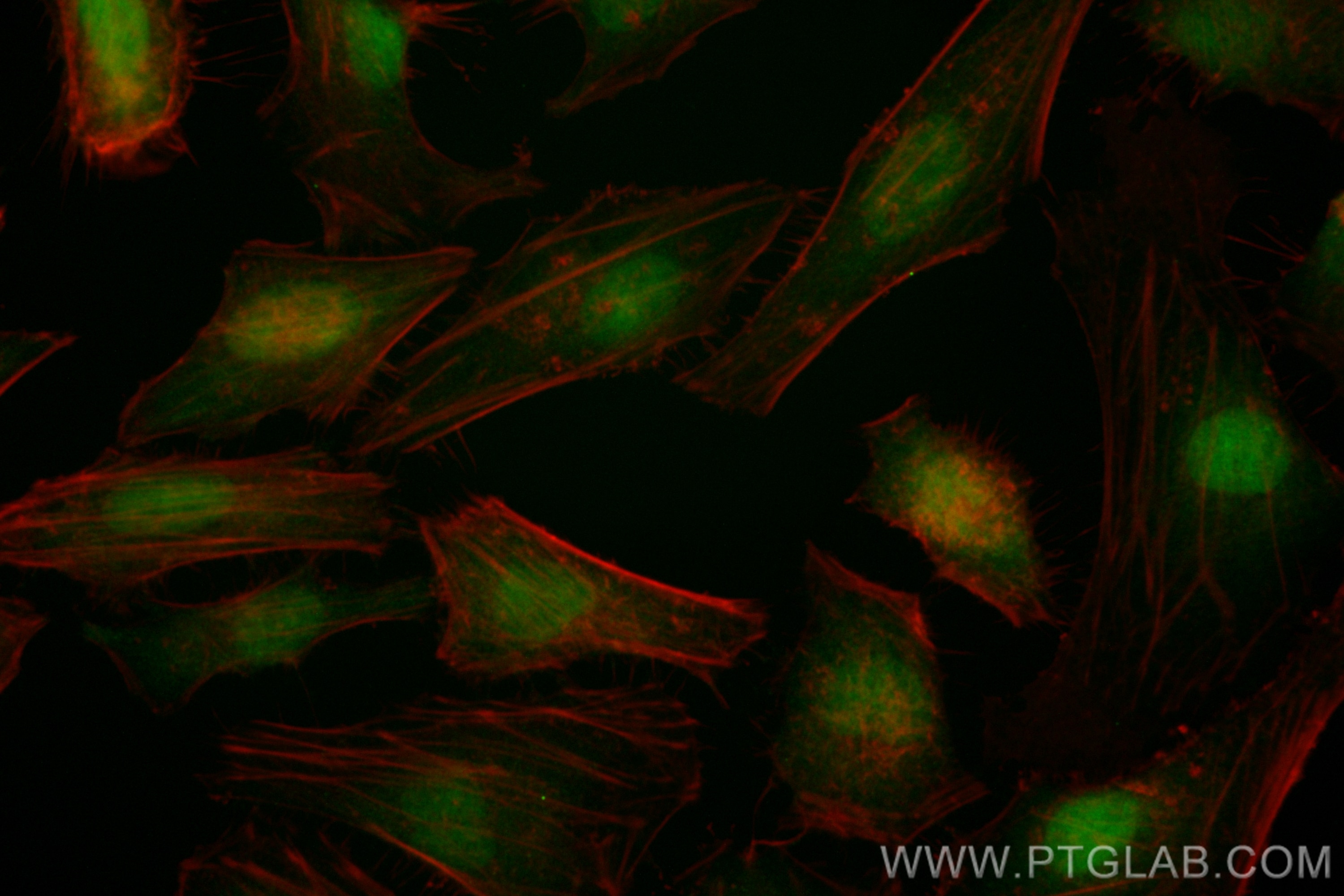ANAPC10 Rekombinanter Antikörper
ANAPC10 Rekombinant Antikörper für IF/ICC
Wirt / Isotyp
Kaninchen / IgG
Getestete Reaktivität
human
Anwendung
IF/ICC
Konjugation
CoraLite® Plus 488 Fluorescent Dye
CloneNo.
240492E7
Kat-Nr. : CL488-83570-4
Synonyme
Geprüfte Anwendungen
| Erfolgreiche Detektion in IF/ICC | HeLa-Zellen |
Empfohlene Verdünnung
| Anwendung | Verdünnung |
|---|---|
| Immunfluoreszenz (IF)/ICC | IF/ICC : 1:50-1:500 |
| It is recommended that this reagent should be titrated in each testing system to obtain optimal results. | |
| Sample-dependent, check data in validation data gallery | |
Produktinformation
CL488-83570-4 bindet in IF/ICC ANAPC10 und zeigt Reaktivität mit human
| Getestete Reaktivität | human |
| Wirt / Isotyp | Kaninchen / IgG |
| Klonalität | Rekombinant |
| Typ | Antikörper |
| Immunogen | ANAPC10 fusion protein Ag8487 |
| Vollständiger Name | anaphase promoting complex subunit 10 |
| Berechnetes Molekulargewicht | 185 aa, 21 kDa |
| GenBank-Zugangsnummer | BC005217 |
| Gene symbol | ANAPC10 |
| Gene ID (NCBI) | 10393 |
| Konjugation | CoraLite® Plus 488 Fluorescent Dye |
| Excitation/Emission maxima wavelengths | 493 nm / 522 nm |
| Form | Liquid |
| Reinigungsmethode | Protein-A-Reinigung |
| Lagerungspuffer | PBS with 50% glycerol, 0.05% Proclin300, 0.5% BSA |
| Lagerungsbedingungen | Bei -20°C lagern. Vor Licht schützen. Nach dem Versand ein Jahr stabil. Aliquotieren ist bei -20oC Lagerung nicht notwendig. 20ul Größen enthalten 0,1% BSA. |
Hintergrundinformationen
The anaphase promoting complex/cyclosome (APC/C) is a cell cycle-regulated multimeric E3 ubiquitin ligase assembled from 13 individual subunits. The anaphase promoting complex subunit 10 (APC10) is a core subunit of APC/C that is highly conserved in humans. APC10 genetically and physically interacts with a series of subunits of the APC/C and is necessary for the ubiquitination activity of APC/C by enhancing the affinity of the APC/C for its substrate.
Protokolle
| PRODUKTSPEZIFISCHE PROTOKOLLE | |
|---|---|
| IF protocol for CL Plus 488 ANAPC10 antibody CL488-83570-4 | Protokoll herunterladen |
| STANDARD-PROTOKOLLE | |
|---|---|
| Klicken Sie hier, um unsere Standardprotokolle anzuzeigen |


